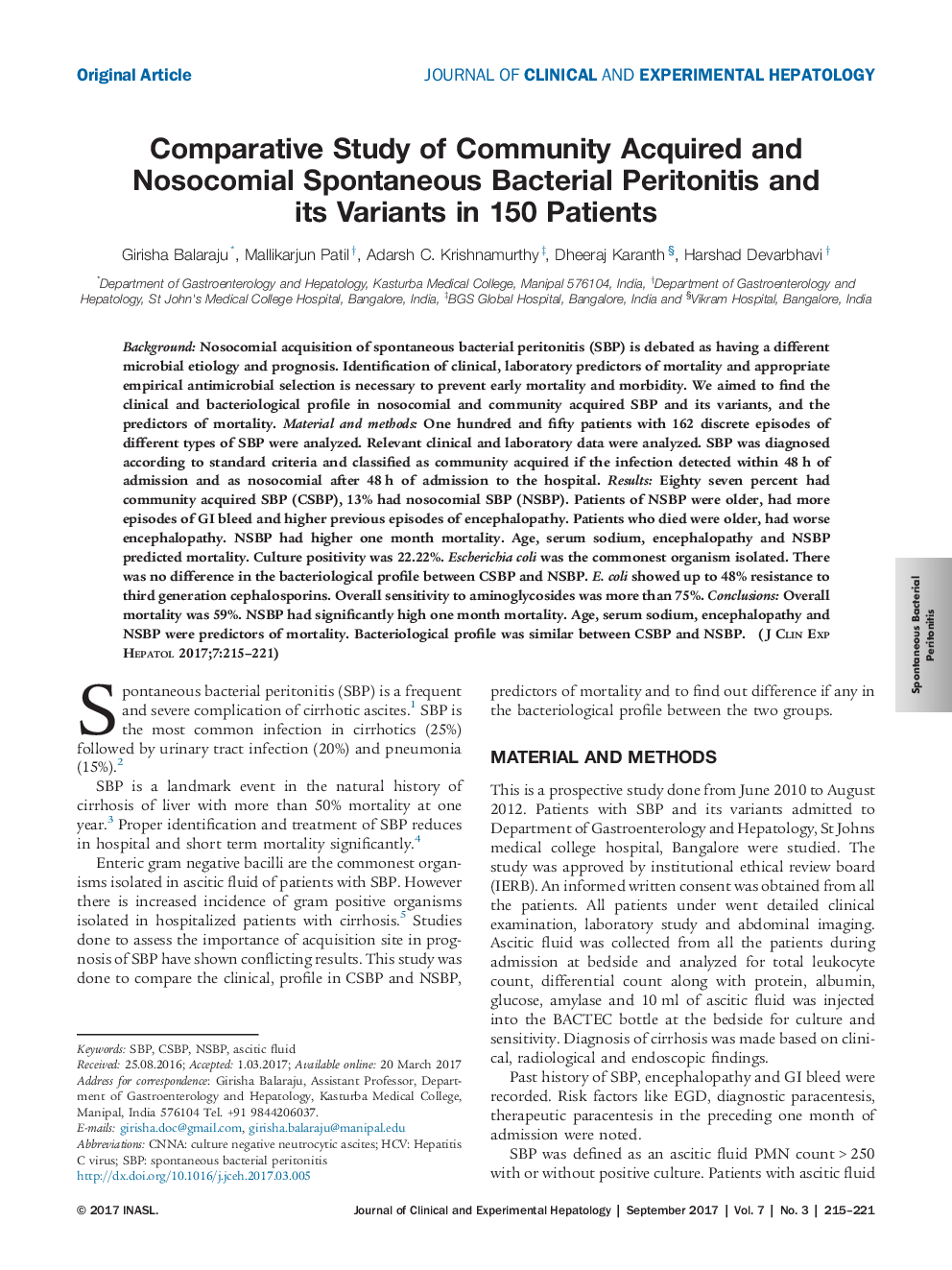| Article ID | Journal | Published Year | Pages | File Type |
|---|---|---|---|---|
| 5664845 | Journal of Clinical and Experimental Hepatology | 2017 | 7 Pages |
BackgroundNosocomial acquisition of spontaneous bacterial peritonitis (SBP) is debated as having a different microbial etiology and prognosis. Identification of clinical, laboratory predictors of mortality and appropriate empirical antimicrobial selection is necessary to prevent early mortality and morbidity. We aimed to find the clinical and bacteriological profile in nosocomial and community acquired SBP and its variants, and the predictors of mortality.Material and methodsOne hundred and fifty patients with 162 discrete episodes of different types of SBP were analyzed. Relevant clinical and laboratory data were analyzed. SBP was diagnosed according to standard criteria and classified as community acquired if the infection detected within 48Â h of admission and as nosocomial after 48Â h of admission to the hospital.ResultsEighty seven percent had community acquired SBP (CSBP), 13% had nosocomial SBP (NSBP). Patients of NSBP were older, had more episodes of GI bleed and higher previous episodes of encephalopathy. Patients who died were older, had worse encephalopathy. NSBP had higher one month mortality. Age, serum sodium, encephalopathy and NSBP predicted mortality. Culture positivity was 22.22%. Escherichia coli was the commonest organism isolated. There was no difference in the bacteriological profile between CSBP and NSBP. E. coli showed up to 48% resistance to third generation cephalosporins. Overall sensitivity to aminoglycosides was more than 75%.ConclusionsOverall mortality was 59%. NSBP had significantly high one month mortality. Age, serum sodium, encephalopathy and NSBP were predictors of mortality. Bacteriological profile was similar between CSBP and NSBP.
